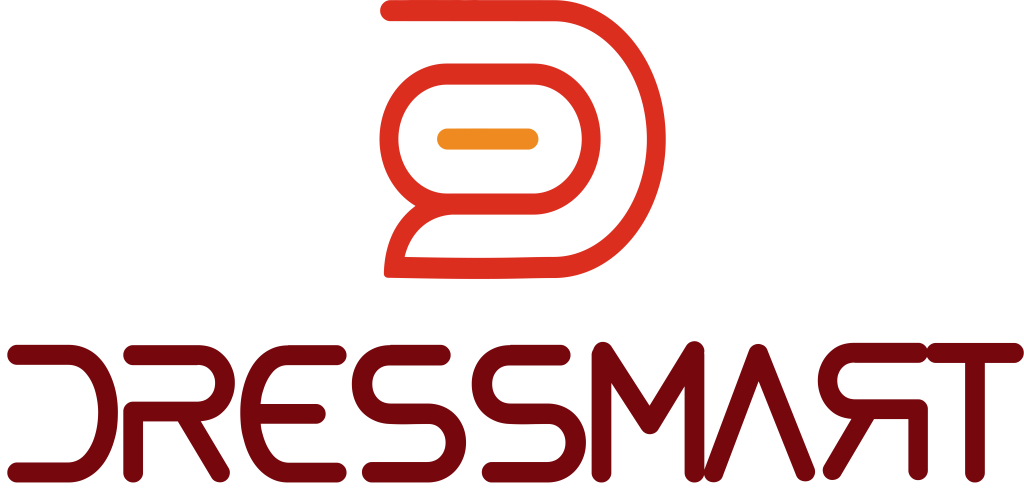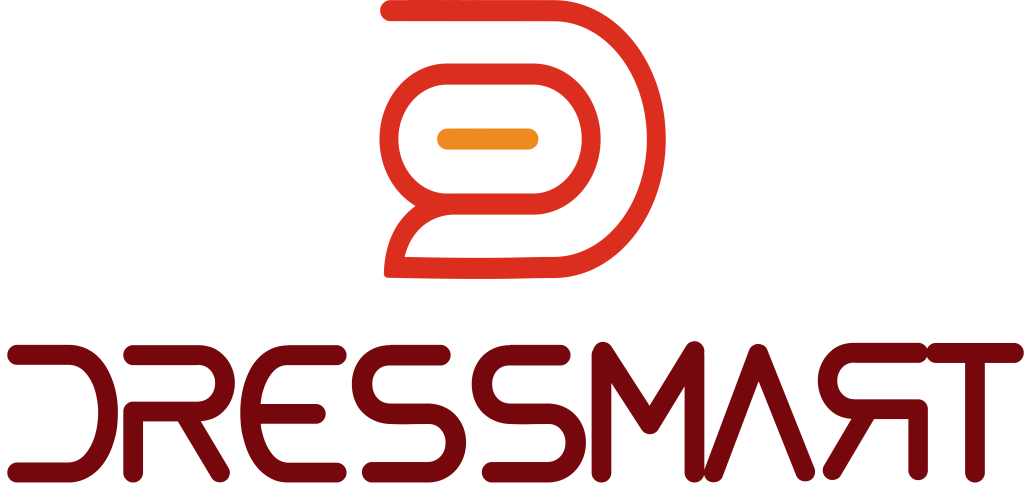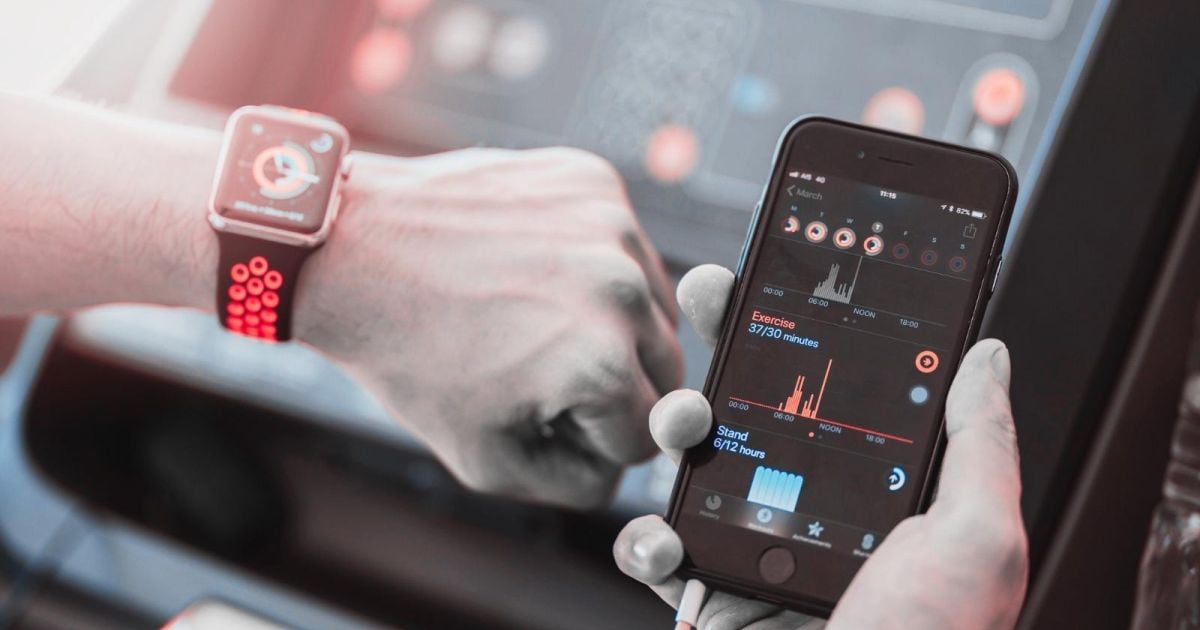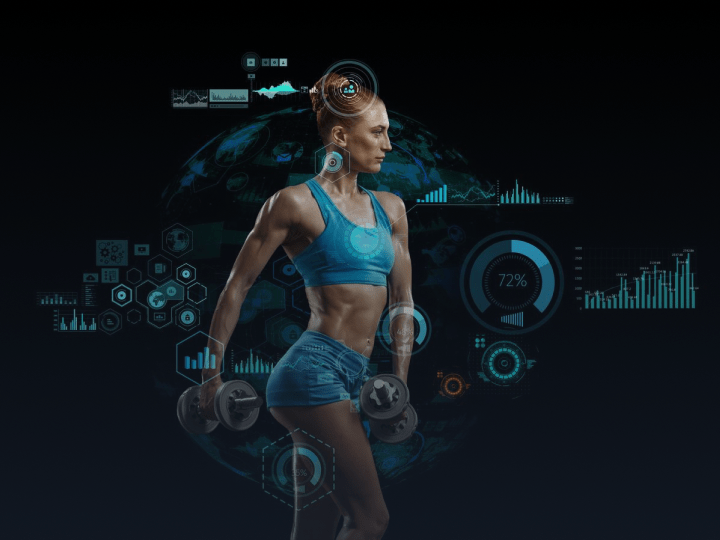Wearable technology has become an essential part of modern life, revolutionizing how people monitor their health, track their fitness progress, and optimize their daily activities. These advanced devices are designed to be worn on the body and utilize integrated sensors, wireless connectivity, and artificial intelligence to collect, analyze, and provide real-time data. From smartwatches that monitor heart rate and sleep patterns to AI-powered sportswear that tracks muscle activity and movement, wearable technology is at the forefront of innovation in health, fitness, and lifestyle management. As the demand for more efficient, data-driven health solutions grows, these intelligent devices continue to evolve, offering enhanced control over personal well-being and performance optimization.
Types of Wearable Technology
Wearable technology includes a wide range of devices, each designed for specific purposes. Some of the most common types include:
- Smartwatches – These devices function as an extension of smartphones, providing users with notifications, GPS tracking, and comprehensive health monitoring, including heart rate, oxygen levels, sleep quality, and step tracking. Many smartwatches also feature workout modes, allowing users to optimize their training sessions.
- Fitness Trackers – Unlike smartwatches, fitness trackers are specifically designed for health and exercise monitoring. These compact devices measure steps, calories burned, distance traveled, and workout intensity. They also track sleep patterns, heart rate variability, and hydration levels, helping users maintain a balanced lifestyle.
- Smart Clothing – Embedded with biometric sensors, smart clothing is one of the most innovative forms of wearable technology. These garments track physiological indicators such as muscle activity, posture, body temperature, and breathing rate. Athletes and fitness enthusiasts can use this data to enhance their performance and reduce the risk of injury.
- Wearable Medical Devices – Designed for healthcare purposes, these devices include ECG monitors, continuous glucose monitors (CGMs), smart hearing aids, and remote patient monitoring systems. They allow individuals to manage chronic conditions and provide healthcare professionals with real-time insights into patients’ vital signs.
- Smart Glasses – Augmented reality (AR) and virtual reality (VR) glasses enhance real-world experiences by overlaying digital information onto the user’s field of vision. These devices are widely used in industries such as gaming, training simulations, healthcare, and remote assistance.
- Body Sensors – Small, wireless sensors attach to different body parts to monitor vital signs, movement efficiency, hydration levels, and stress responses. These sensors are often used in sports training, rehabilitation programs, and professional healthcare applications.
- Wearable Cameras – These devices provide hands-free, first-person video recording. They are commonly used by content creators, security personnel, athletes, and law enforcement officers.
Advantages of Wearable Technology
The growing adoption of wearable technology can be attributed to its numerous benefits across different fields. Some of the most significant advantages include:
- Real-Time Health Monitoring – Wearable devices allow users to track their vital signs in real-time, enabling early detection of health issues such as irregular heartbeats, stress levels, and oxygen saturation. This proactive approach helps individuals maintain their overall well-being and seek medical intervention when necessary.
- Enhanced Fitness and Performance Tracking – Smart fitness devices offer personalized insights into workout routines, helping users track progress and make necessary adjustments. Data on heart rate zones, calorie expenditure, muscle activation, and exercise intensity allow individuals to optimize their training sessions and achieve fitness goals more efficiently.
- Increased Productivity and Workplace Efficiency – In corporate environments, wearable technology streamlines communication, automates workflow, and improves task management. Smart glasses, for instance, allow professionals to access digital data without using their hands, making them ideal for industries such as logistics, manufacturing, and healthcare.
- Convenience and Seamless Connectivity – Wearables are designed to work in sync with smartphones and other smart devices. This seamless integration ensures that users receive notifications, track health metrics, and access data effortlessly, enhancing their daily experiences.
- Customized User Experience Through AI and Machine Learning – Many wearable devices incorporate artificial intelligence and machine learning algorithms to analyze user behavior and provide tailored recommendations. This personalization makes health and fitness tracking more effective and engaging.
- Injury Prevention and Rehabilitation – Wearable devices, particularly smart clothing and body sensors, help athletes and fitness enthusiasts prevent injuries by detecting improper movements and providing real-time feedback. They are also used in rehabilitation programs to monitor recovery progress and guide patients through physical therapy exercises.
Different Types of Wearable Technology
Wearable technology is continuously evolving, with new innovations enhancing its functionality and appeal. Some of the most prominent categories include:
1. Health and Fitness Wearables
- Smartwatches and fitness bands equipped with advanced sensors for step tracking, heart rate monitoring, and calorie counting.
- Muscle activity monitors embedded in smart sportswear to improve athletic performance and reduce injury risk.
- Sleep tracking devices designed to monitor sleep patterns and optimize rest and recovery.
2. Medical and Healthcare Wearables
- Continuous glucose monitors (CGMs) that help individuals with diabetes manage their blood sugar levels in real time.
- ECG and heart rate monitors used for cardiovascular health assessment and arrhythmia detection.
- Smart hearing aids that automatically adjust to different sound environments, improving auditory experiences.
3. Augmented Reality (AR) and Virtual Reality (VR) Devices
- AR glasses that overlay digital information onto the real world, enhancing navigation, training, and medical applications.
- VR headsets used in gaming, education, and professional simulations to create immersive experiences.
4. Smart Clothing and Accessories
- AI-powered sportswear that analyzes movement, muscle engagement, and energy expenditure.
- Heated jackets with temperature control features for outdoor activities and extreme weather conditions.
- Smart shoes that assess gait, posture, and running mechanics to enhance performance and prevent injuries.
Smart Sportswear: The Future of Fitness Technology
As wearable technology advances, smart sportswear is emerging as one of the most promising innovations in fitness and health tracking. Unlike traditional wearables that are worn as accessories, smart clothing seamlessly integrates biometric sensors into the fabric, providing real-time data on muscle activity, heart rate, posture, and movement efficiency. This technology eliminates the need for external devices, offering users a comfortable and practical solution for tracking their fitness performance.
Our cutting-edge smart sportswear is designed to revolutionize how individuals approach fitness and training. By leveraging AI-powered data analysis, this advanced apparel provides users with valuable insights to optimize workouts, improve endurance, and enhance muscle growth. Whether you are an athlete, a fitness enthusiast, or someone looking to maintain a healthy lifestyle, smart sportswear delivers a comprehensive and effective way to achieve your goals. The ability to track muscle activation and receive personalized recommendations ensures that users train efficiently while minimizing the risk of overuse injuries and muscular imbalances.
Conclusion
Wearable technology is transforming the way people engage with health, fitness, and everyday activities. The variety of devices available today, from smartwatches and fitness trackers to smart clothing and medical wearables, provides individuals with unprecedented access to data-driven insights that enhance their well-being and performance. As technology continues to evolve, smart wearables will become more accurate, efficient, and integrated into daily life.
With the rise of biometric tracking and AI-powered insights, smart sportswear represents the next frontier in digital health and fitness technology. Investing in wearable innovations enables individuals to take control of their health, track their progress, and optimize their physical performance. As the world moves toward a data-driven approach to fitness and wellness, wearable technology will play a crucial role in shaping a smarter, healthier future.
Intravenous Solutions Wellness Center
Intravenous (IV) therapy has evolved into an essential component of modern healthcare, providing a direct and efficient method for delivering fluids, medications, and essential nutrients into the bloodstream. This method is widely utilized in hospitals, wellness centers, and home healthcare settings, ensuring patients receive immediate relief and treatment for various health conditions. The ability to deliver precise amounts of fluids and nutrients makes IV therapy a preferred choice for individuals requiring hydration, immune system support, and recovery assistance.
Wellness centers specializing in IV solutions offer a variety of customized treatments tailored to individual health needs. These services cater to patients suffering from dehydration, vitamin deficiencies, chronic fatigue, and weakened immune systems. Some of the most common IV therapy treatments include:
- Hydration therapy: This therapy is ideal for individuals recovering from illness, excessive physical exertion, or inadequate fluid intake. Proper hydration supports bodily functions, improves energy levels, and promotes overall wellness.
- Vitamin and mineral infusions: These infusions contain essential vitamins such as vitamin C, B-complex, and minerals like magnesium, helping to enhance immune function, boost energy, and promote cellular repair.
- Detox and recovery infusions: Designed to flush out toxins from the body, support liver function, and accelerate the healing process after illness, stress, or excessive alcohol consumption.
To enhance the safety and effectiveness of IV therapy, AI-powered smart IV pumps, such as Serum Tracker’s innovative system, provide an advanced level of automation in fluid administration. These smart pumps reduce human error, ensure precise dosing, and optimize fluid delivery, improving patient safety and making IV therapy more efficient for medical practitioners and wellness centers.
Intravenous Solutions and Equipment
The effectiveness of IV therapy is highly dependent on the quality and precision of the equipment used to deliver fluids and medications. Modern IV solutions require advanced medical devices that allow for controlled, safe, and efficient fluid administration. Some of the essential components of intravenous therapy include:
- IV Bags: These bags contain various types of fluids, such as saline, dextrose, or electrolyte solutions, used for hydration and medication administration.
- IV Tubing and Catheters: Flexible tubes and thin catheters help transport fluids from the IV bag into the patient’s veins.
- Infusion Pumps: These devices are essential for regulating the flow rate of IV fluids, ensuring that the right amount of fluid reaches the patient at a controlled pace.
- Needles and Ports: These components facilitate fluid administration by providing an entry point into the patient’s veins.
Traditional IV pumps often require manual adjustments, which can lead to inconsistencies, dosage errors, and contamination risks. However, the introduction of AI-driven smart IV pumps, like Serum Tracker’s device, has transformed IV therapy by integrating machine learning algorithms that automatically adjust and regulate fluid flow based on real-time patient data. This innovation significantly reduces the risks associated with manual flow adjustments, including overhydration, underhydration, and medication errors.
Solution for Intravenous Infusion
To ensure the highest level of safety and effectiveness in intravenous fluid administration, healthcare providers must utilize cutting-edge solutions designed to optimize the infusion process. The most effective intravenous infusion solutions include:
- Automated IV Pumps: AI-powered smart infusion pumps are designed to adjust fluid flow rates automatically, enhancing accuracy, safety, and treatment effectiveness.
- Integrated Health Monitoring Systems: Smart IV devices that synchronize with vital sign monitors to adjust infusion rates based on real-time patient data, minimizing risks and improving patient outcomes.
- Enhanced Sterility Protocols: The use of disposable IV components and closed-loop infusion systems reduces the likelihood of bacterial contamination and cross-infections.
- Data-Driven Decision Making: AI-powered IV devices analyze patient data to provide insights on hydration levels, medication efficacy, and potential treatment adjustments, ensuring personalized and optimized therapy.
Serum Tracker’s AI-powered smart IV pump embodies these solutions, offering a cutting-edge approach to intravenous infusion. By integrating automation and machine learning, healthcare providers can deliver safer, more efficient, and highly customizable IV therapy to their patients.
Smart Intravenous Therapy Solutions: Advancing Patient Care with AI-Driven IV Infusion
With the increasing demand for accuracy and automation in healthcare, smart intravenous therapy solutions are redefining how IV fluids and medications are administered. Serum Tracker’s AI-powered IV pump introduces several groundbreaking features that set it apart from traditional IV devices:
- Real-time monitoring and automated adjustment: The smart pump continuously track patient vitals and dynamically adjusts fluid delivery to ensure optimal hydration and medication dosing.
- Enhanced patient safety: By reducing human errors, these devices eliminate the risks associated with over- or under-infusion, ultimately improving patient health outcomes.
- Remote monitoring capabilities: Medical professionals can oversee IV therapy remotely, reducing the need for constant physical supervision and enhancing workflow efficiency.
- Portability and adaptability: These smart IV pumps are designed for use in various healthcare settings, including hospitals, wellness centers, and home healthcare environments, making IV therapy more accessible and convenient.
By embracing next-generation intravenous therapy solutions, healthcare providers can significantly enhance patient care, minimize risks, and optimize efficiency in fluid administration. The integration of AI-driven technology in IV therapy is a pivotal step toward revolutionizing healthcare practices and improving patient outcomes worldwide.
Conclusion
Intravenous therapy plays a crucial role in delivering essential fluids, medications, and nutrients to patients in need of hydration, medication administration, and wellness treatments. Over the years, advancements in AI-driven IV technology have drastically improved the safety, precision, and effectiveness of IV fluid transmission. With the introduction of smart IV pumps, such as Serum Tracker’s, healthcare providers now have access to an intelligent solution that automates and optimizes intravenous infusion, leading to improved patient outcomes and streamlined medical processes.
As medical technology continues to evolve, automated IV therapy solutions will set new standards for healthcare efficiency and safety. The future of intravenous therapy lies in AI-driven innovation, ensuring that patients receive safer, smarter, and more effective IV fluid management in hospitals, wellness centers, and home care settings alike.




